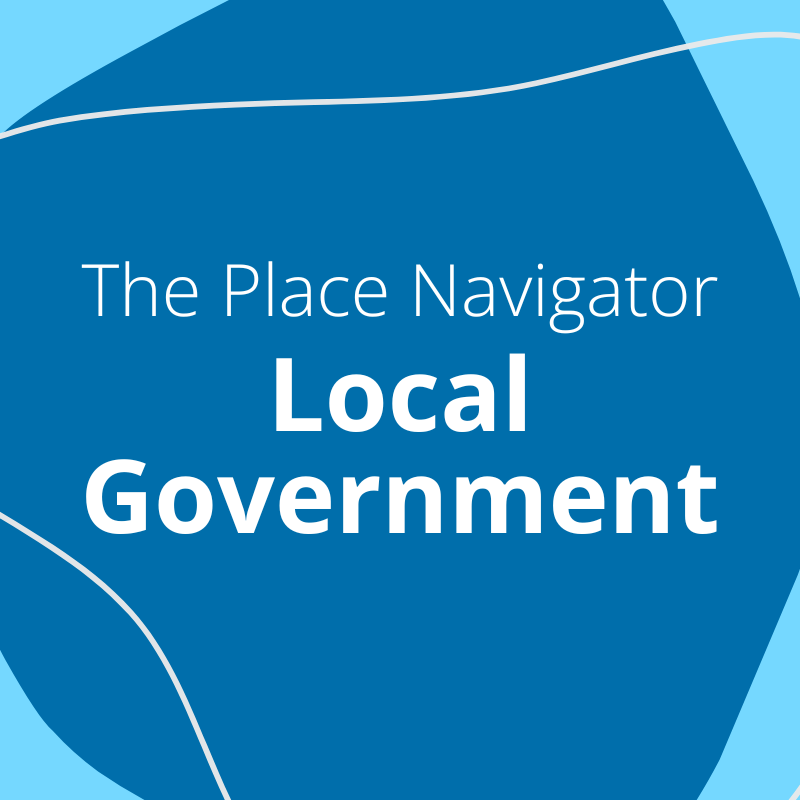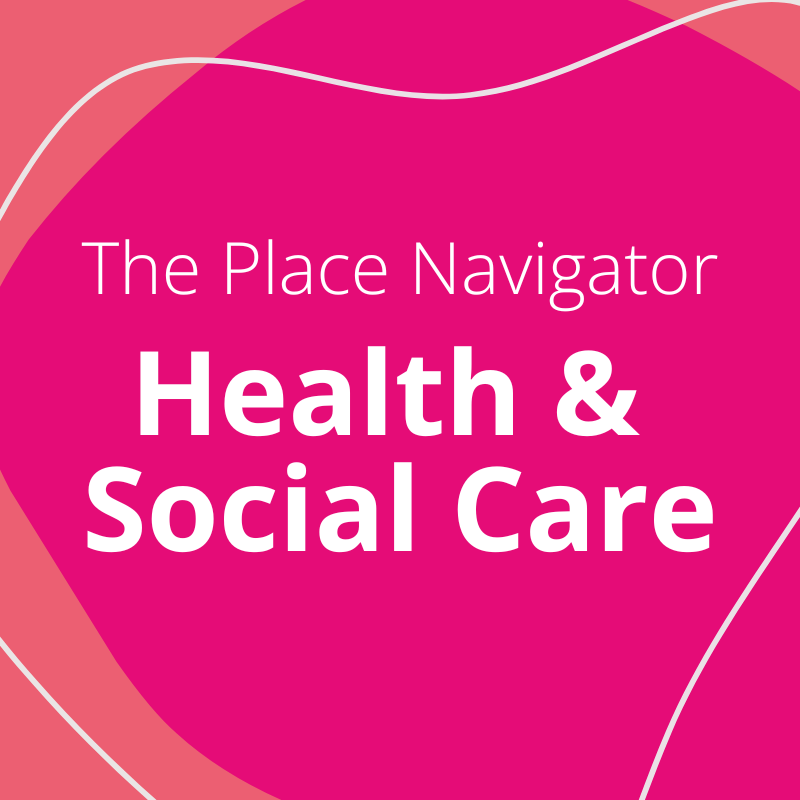Overview
Local government delivers a range of services in a defined area. This can be in areas such as social care, schools, housing, business support and waste collection. Depending on the area there might be different layers of government. Local government is funded by government grants, council tax and other fees and charges. In any area there may be a combination of these councils/ authorities;
- Combined authorities; a partnership of councils.
- Single tier authorities; metropolitan boroughs or unitary councils.
- Two tier authorities; county and district councils.
You can find out more about the organisations involved in local government towards the bottom of this page where we offer a 'birds eye view' of how they are typically organised.
Key Agendas
Successful collaboration starts with truly understanding what matters to your partners. Here's a quick guide to some of the key agendas you might come across when working to develop relationships in this area.
Place-Based Working and Devolution
- Partnering with other councils and local organisations to address local challenges around housing, health, education, infrastructure, and economic development.
- Contributing to evidence-based policy and service design at neighbourhood, borough, and regional levels.
- Devolution is creating opportunities to shape places more directly, but with it comes responsibility. Local authorities are looking for strategic partners to deliver ambitious place-based plans, make better use of data and evidence, and demonstrate the impact of local investment and innovation.
Tackling Health Inequalities
Local authorities have statutory duties to promote health and wellbeing. Many councils are taking a population health approach to reducing inequalities in outcomes like life expectancy, mental health, and long-term conditions.
How this is addressed in practice:
- Producing Joint Strategic Needs Assessments (JSNAs) and Health & Wellbeing Strategies.
- Commissioning services through public health teams (e.g. smoking cessation, weight management).
- Partnering with NHS and VCSE organisations via Health and Wellbeing Boards or Integrated Care Partnerships.
- Supporting community-led wellbeing initiatives e.g. peer support and social prescribing programmes.
- Embedding health equity into planning, housing, transport, and green space strategies.
Promoting Inclusive Economic Growth
Councils aim to ensure economic development benefits local residents, particularly those furthest from opportunity.
How this is addressed in practice:
- Developing Local Plans and Economic Strategies that emphasise inclusive growth.
- Supporting employment and skills programmes for priority groups (e.g. young people not in education or employment).
- Investing in town centre regeneration and community enterprise.
- Leveraging procurement and social value to support local businesses and organisations.
Delivering Net Zero and Climate Resilience
Many councils have declared climate emergencies and are acting to cut emissions and adapt to environmental risks.
How this is addressed in practice:
- Developing local climate action or adaptation plans.
- Retrofitting council housing and public buildings to reduce energy use.
- Embedding carbon reduction criteria in procurement, transport, and planning policies.
- Running community engagement campaigns around behaviour change for sustainability e.g. recycling, using local transport.
- Supporting local energy generation, biodiversity projects, or climate education.
Systemic Inequality
Councils are increasingly recognising and addressing systemic racism and inequality in services and systems.
How this is addressed in practice:
- Publishing Race Equality Action Plans or Equality Objectives.
- Commissioning data audits and equity reviews of services.
- Partnering with Black and racially minoritised community organisations to review practices or inform policies
- Offering training on anti-racism and inclusive practice to staff.
- Involving people with lived experience in policy development and scrutiny.
Strengthening Communities and Community Participation
Councils want to work with residents and communities, not just for them.
How this is addressed in practice:
- Running participatory budgeting or citizens' assemblies.
- Supporting community development officers and local forums.
- Funding grassroots and VCSE organisations through grants or commissioning.
- Facilitating co-production of services or neighbourhood plans.
- Creating Community Hubs or integrated locality teams.
Doing More with Less: Innovation and Efficiency
Faced with tight budgets, councils are reshaping how they deliver services and looking for creative partnerships.
How this is addressed in practice:
- Forming shared services across authorities or agencies.
- Using data and digital tools to redesign services.
- Supporting community-led models, mutual aid, and co-operatives.
- Partnering with universities or think tanks to evaluate impact and value for money.
- Leveraging external funding such as Arts Council, or Lottery funds.
Top Tips for Working Together
Here are some key insights to help you collaborate more effectively with other actors in your place:
Understand the Local Authority's Structure and Priorities
- Local authorities are complex organisations with political leadership, professional officers, and statutory responsibilities.
- Read the Council Plan, Health and Wellbeing Strategy, or Equality Objectives to understand strategic goals.
- Explore departmental remits e.g. Public Health, Regeneration, Communities, Climate, Economic Development, to find the ream you're looking for.
- Use council websites to find contact details for relevant officers or portfolio holders (elected councillors with specific briefs).
Work with Officers and Elected Members Differently
- Council officers deliver services, manage projects, and are good entry points for partnership working.
- Elected members (councillors) are responsible for political leadership, advocacy, and democratic accountability.
- When engaging with councillors, understand their political priorities, ward interests, and committee roles.
- Recognise that relationships take time, building trust across both political and professional spheres is key.
- Attend council meetings, read council meetings and get to know local councillors.
Align with Local Policy and Timelines
- Local government operates on political cycles and often responds to national funding windows with short deadlines.
- Be prepared to move quickly, but also understand that officers are often stretched; offer support, not just asks.
- Timing matters; budget-setting periods, pre-election purdah, or changes in leadership can affect responsiveness.
- Stay up-to-date with policy consultations, regional strategies, and events to spot opportunities for collaboration.
Clarify Roles, Expectations, and Shared Goals
- Be clear about what your university can offer e.g. research, facilitation, data analysis, public engagement, evaluation, or access to spaces.
- Ask what the council needs and what success looks like for them; co-design the work, don't just present your agenda.
- Respect existing partnerships and commitments, many councils already collaborate with local VCSEs, communities, or other universities and they have long memories.
- Work towards mutual benefit; where the outcomes align with both academic and local authoruty goals.
Build Long Term Relationships
- Move beyond transactional collaboration, invest in long-term, trust-based relationships.
- Get to know individual officers, their motivations, constraints, and priorities.
- Attend local briefings, committee meetings, and cross-sector events.
Existing Relationships in your University
Universities are made up of many departments, faculties, schools etc. all of these are made up of individuals who may already have existing relationships with local government. It's important to respect existing relationships and work with colleagues who have already spent time and care building them.
Where might partnerships already exist in your university?
Teaching
Courses and curricula may already involve local government through placements, co-designed modules, or professional development.
- Public policy, social work, education, urban planning, and environmental science programmes often include local government partnerships.
- Look for community-engaged learning modules or placements that partner with councils.
- Teaching staff may serve on advisory panels or contribute to council-led initiatives, like regeneration boards or early years programmes.
- Continuing education or executive programmes might deliver CPD to council officers (e.g. leadership, data analysis, planning, law).
- Careers and employability teams often work with councils for internships, live briefs, and graduate roles.
Where to start:
- Course leaders, placement coordinators, professional development teams.
Research
Academic research frequently overlaps with council priorities, from housing to climate adaptation to social care.
- Universities may conduct commissioned research or evaluations for councils (e.g. homelessness interventions, social care pilots).
- Local government often collaborates on impact case studies or co-produced projects for funding bids.
- Research centres may focus on themes like inclusive growth, public service reform, or sustainable cities.
Where to start:
- Look at research centre websites and staff profiles.
- Contact research directors, impact officers, or principal investigators.
- Search university portals for work with councils or regional bodies.
Operations
Universities, like councils, are large employers and asset holders, making them natural collaborators on local strategy.
- Universities and councils may be part of anchor institution networks or community wealth-building strategies.
- There may be partnerships on local procurement, net zero goals, or transport planning.
- Joint working on student housing regulation, planning, or community safety is common.
- Shared work may occur around inclusive recruitment, apprenticeship pipelines, or living wage commitments.
Where to start:
- Speak to heads of procurement, estates, HR, or sustainability.
- Review the university's social responsibility, sustainability, or estates strategies.
Central Activity
Education is central to all universities mission's and is often a key part of strategy documents, or local agreements such as civic agreements. Universities must have an Access and Participation Plan (APP) in place.
An APP sets out:
- The risks to equality of opportunity that the provider has identified as relevant to their context,
- 'Intervention strategies' providers will take to challenge risks to equality of opportunity
- how the provider plans to evaluate the impact of their work
- the investment providers plan to make on access and participation work.
There may also be strategic relationships in other central teams;
- Civic or regional engagement offices may have formal relationships with Combined Authorities, local skills boards and other networks.
- Enterprise and innovation units often collaborate with FE/skills providers on startup support, incubation, and entrepreneurial learning.
- Alumni and development teams may have connections with local educators or skills providers among alumni networks.
Find out what teams there are in your university and what partnerships they may already have. How can you work together?
Who might you work with?
Explore some of the key people you might partner with:

Local Councilor
AKA: Councilors, Councilpersons, Council Members, Elected MembersWhat do they do?
Elected representatives who advocate for their community's interests, make decisions on local policies and services, and oversee council activities. They engage with residents, community groups, and local organisations to address concerns and shape local development.
Where you might find them?
Local council offices, community meetings, and public events. They are often visible in their wards and attend council meetings or committees.
What's important to them?
Representing the needs of their constituents, ensuring efficient use of public resources, and advocating for policies that benefit their local area. They value collaboration, accountability, and inclusivity in decision-making.

Community Development Officer
AKA: Community Development Worker, Community OrganiserWhat do they do?
Works directly with residents and local organisations to strengthen community networks, identify needs, and support initiatives that improve social cohesion and well-being. They often facilitate grants, deliver workshops, and coordinate local projects.
Where you might find them?
Community centres, council offices, or working in the field with local groups. They often attend events and meetings to maintain connections with residents.
What's important to them?
Empowering local communities, promoting inclusivity, and fostering grassroots initiatives. They value collaboration, trust-building, and inclusive development.

Strategic Partnerships Officer
AKA: Strategic Alliance Manager, Partnership Manager, External Engagement OfficerWhat do they do?
Facilitates collaboration between the council and external organisations, such as universities, businesses, and community groups. They develop and manage partnerships to address local challenges and deliver on strategic priorities like economic growth, health, or environmental goals.
Where you might find them?
Council offices, external meetings, or strategic forums. They often attend regional or national events to represent the council's interests.
What's important to them?
Building effective and sustainable partnerships, aligning local and regional strategies, and leveraging resources for maximum impact. They value communication, negotiation, and long-term planning.

Social Enterprise Officer
AKA: Social Enterprise Development Officer, Community Development OfficerWhat do they do?
Supports the development and growth of social enterprises that address local challenges. They provide guidance on funding, business planning, and partnerships, helping organisations align their goals with community needs.
Where you might find them?
Council offices, workshops with social enterprises, or networking events. They work closely with third-sector organisations and funding bodies.
What's important to them?
Encouraging innovation, creating social and economic value, and ensuring that local enterprises can thrive. They value sustainability, creativity, and inclusivity.

Regeneration Manager
AKA: Development & Regeneration Manager, Regeneration Officer, Regeneration LeadWhat do they do?
Oversees regeneration projects to revitalise local areas, improve infrastructure, and address socio-economic challenges. They work with developers, architects, community groups, and other partners to ensure projects benefit local residents.
Where you might find them?
Council offices, construction sites, or community consultation events. They often liaise with funders and government agencies to secure investment for projects.
What's important to them?
Delivering impactful, community-driven regeneration projects that balance economic growth with social value. They value innovation, collaboration, and sustainability in urban and rural development.
Birds Eye View
Key organisations and structures, click on the organisation to find out more.
Government bodies:
National Bodies:
Public bodies:
National organisations:
Regional Level:
Local Level:
Two Tier Councils
Single Tier Councils
Case Studies & Resources
Browse a range of other resources relevant to this infrastructure:




















